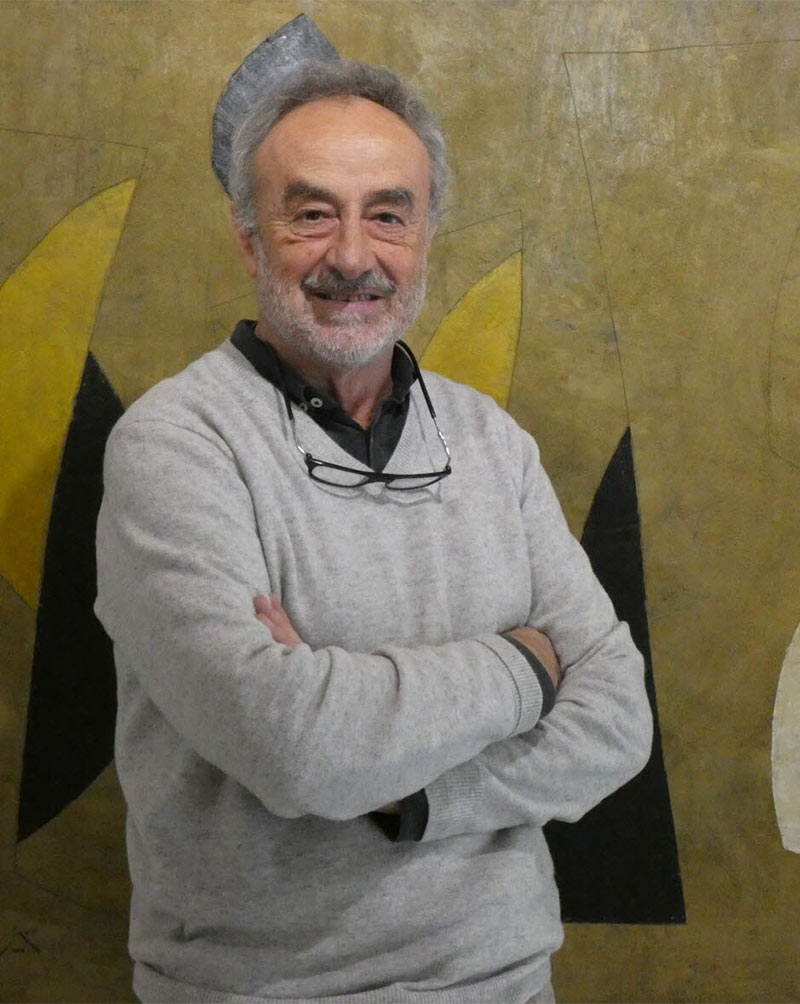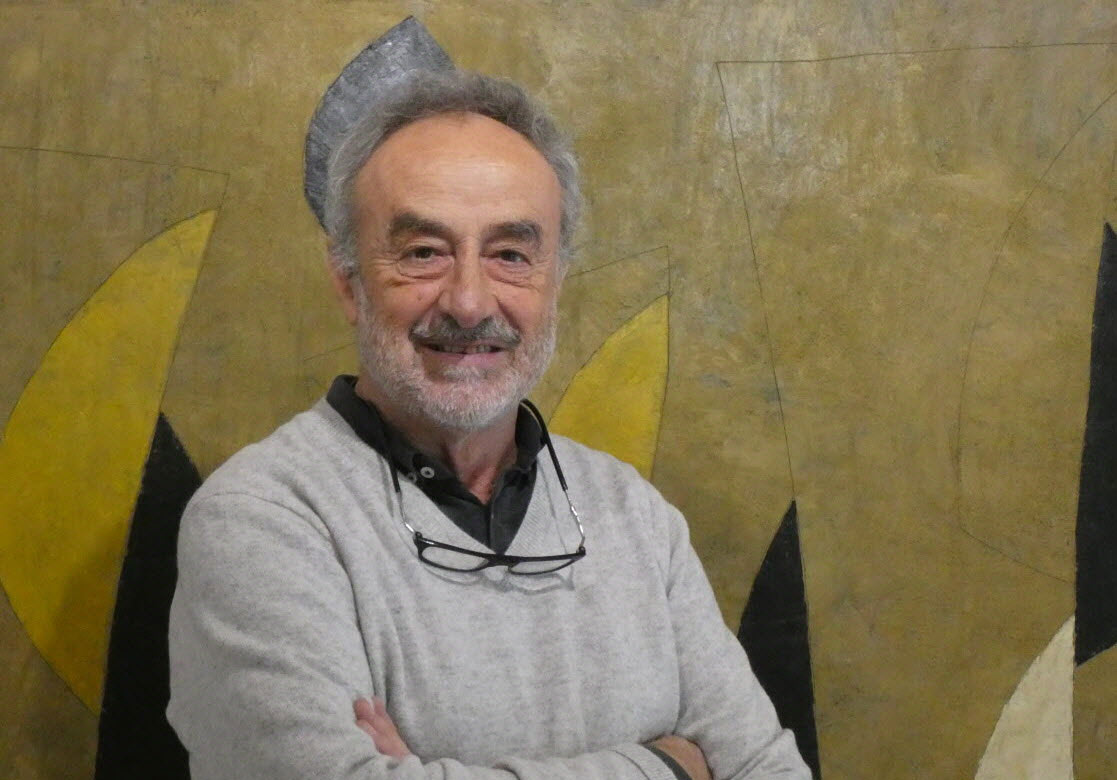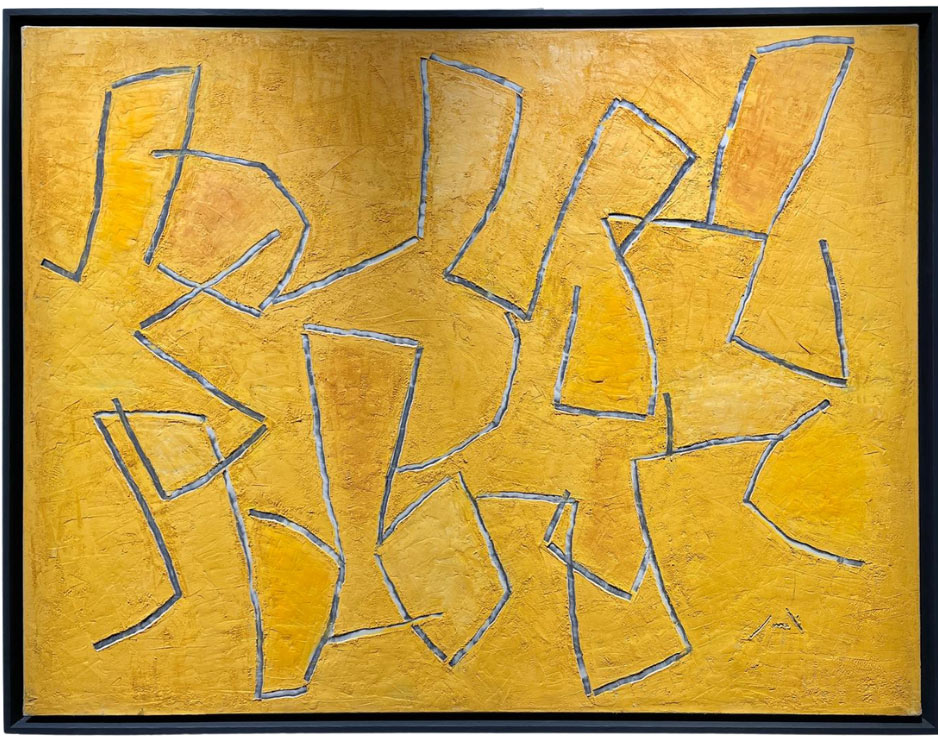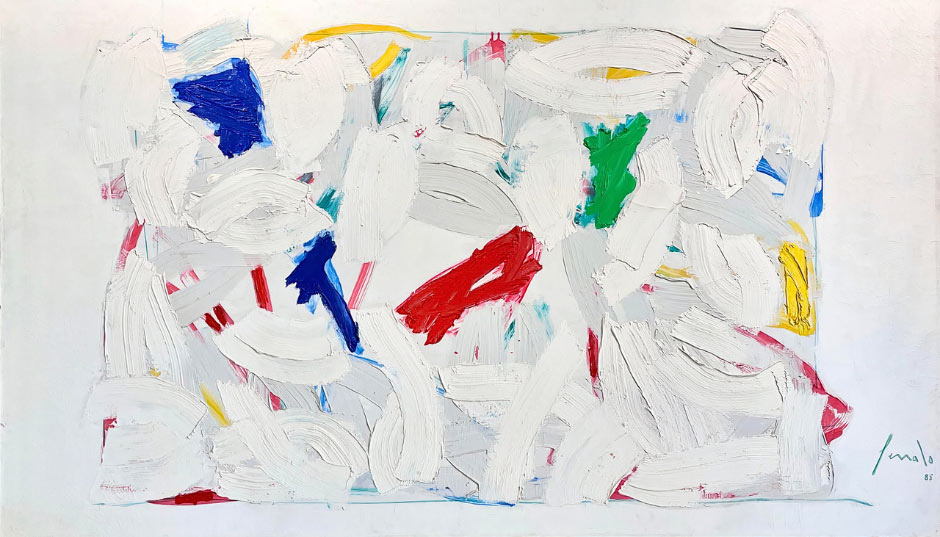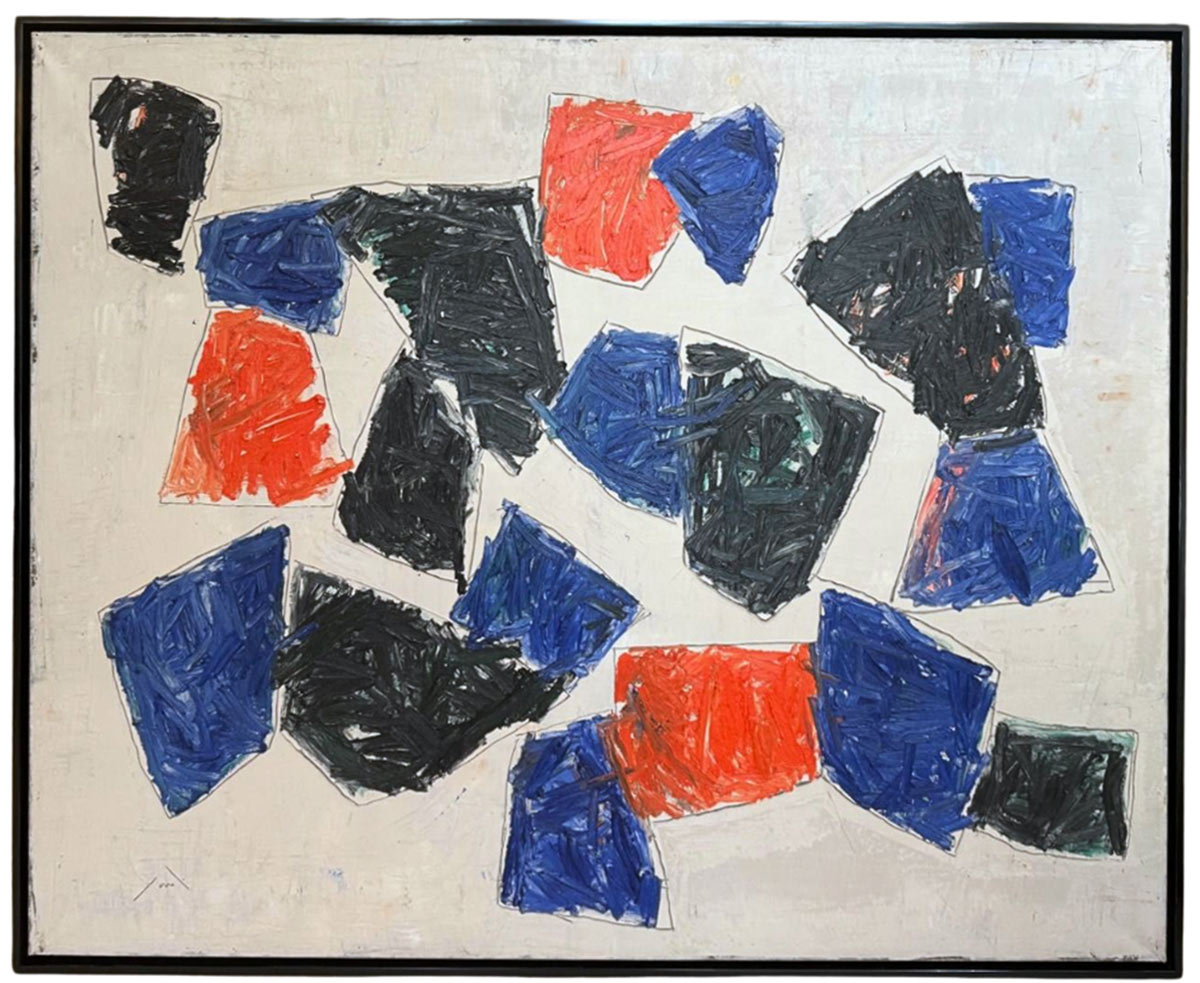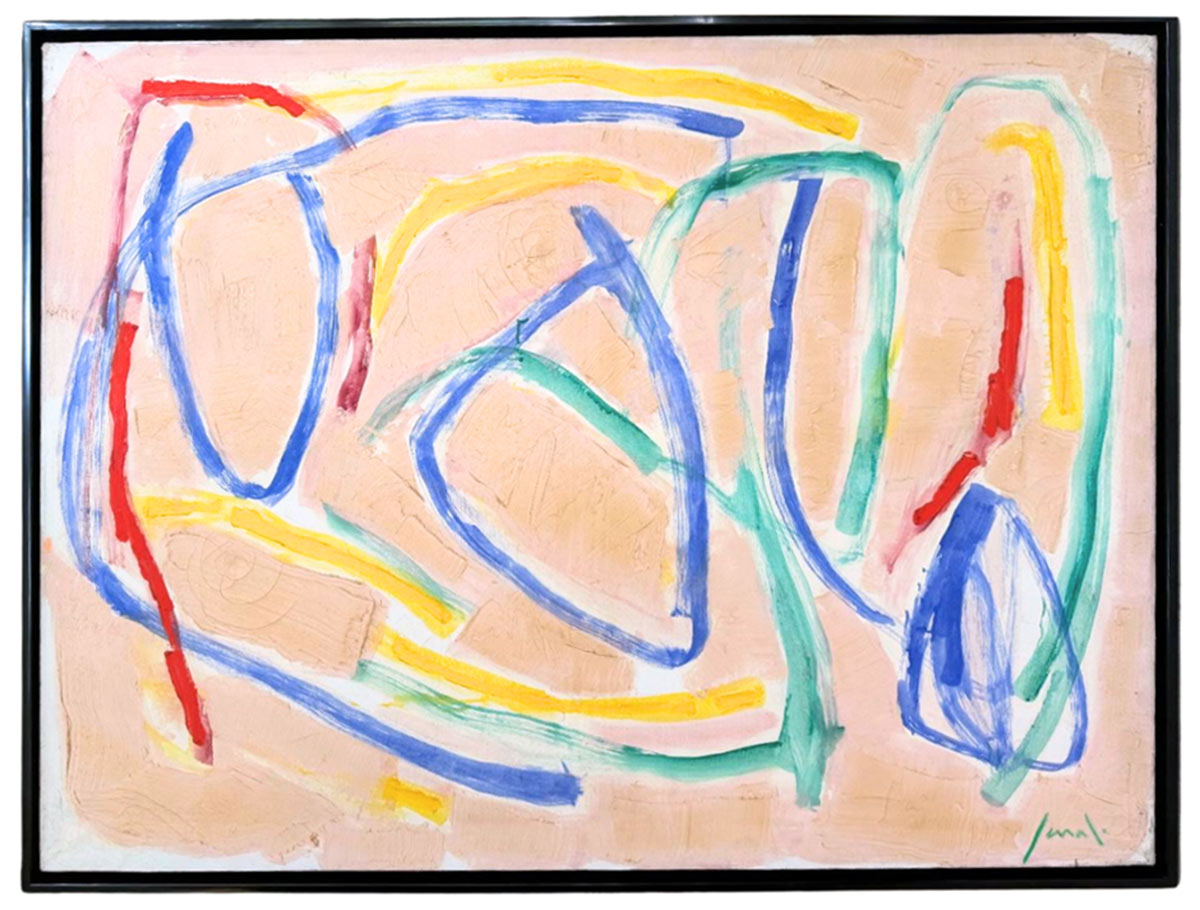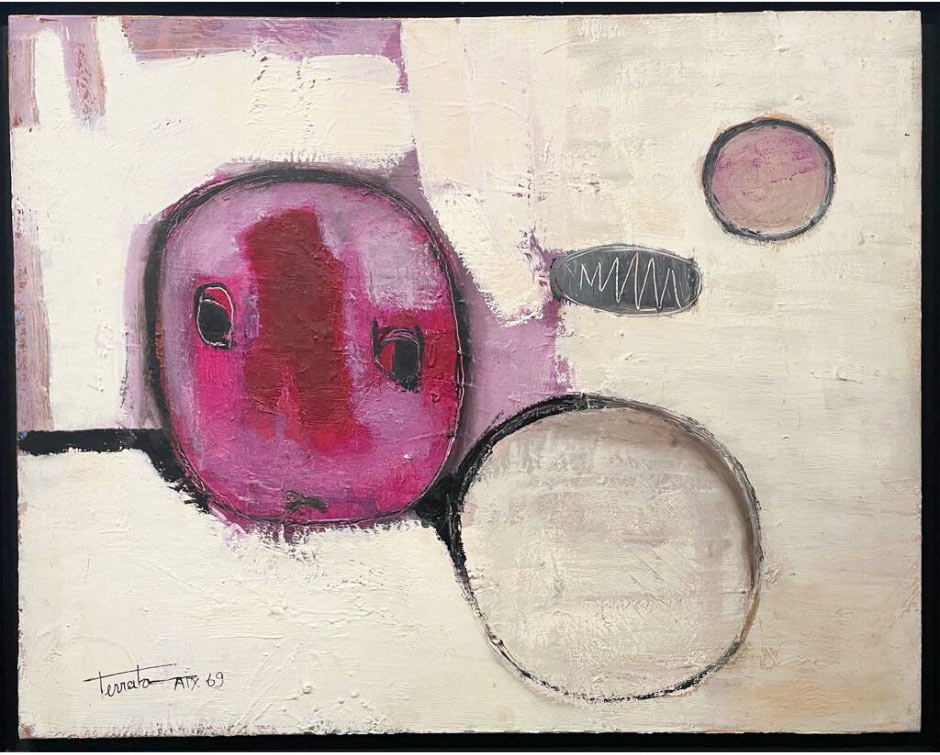Georges Ferrato, born in 1949, was exposed to the world of art through his education and encounters with various art movements. Though little is widely documented about his personal life, it is known that Ferrato developed a strong artistic vision, moving away from classical constraints to explore innovative and experimental approaches to painting.
Ferrato’s work is often associated with the abstractionist tradition, particularly geometric abstraction. While influenced by earlier abstract artists, he injected his own personality into the style, making it distinctly his own. His paintings frequently feature bold geometric shapes, interwoven lines, and an exploration of spatial relationships. Color plays a vital role in Ferrato’s art, with vibrant palettes and contrasts often creating a tension between the form and the background.
Despite the starkness of geometric shapes, Ferrato’s works have a meditative quality, with a subtle play of depth and movement that invites viewers to contemplate the underlying emotional expression behind the arrangement of colors and forms. His pieces often create a sense of balance and rhythm, which may contribute to their resonance with collectors and critics.
During his studies at the School of Fine Arts, his son (whose first objective was to grasp the artist’s artistic career and sensitivity) made a very strong report on his father in his thesis: “Georges Ferrato was able to live and deepen an original and prolific artistic approach. Original, because we find a stylistic identity within abstract painting, the contours of which must be defined. Prolix, because the artist has painted regularly and in quantity for more than 30 years (about more than 2000 canvases, not counting his oils on paper)
Fabrice Hergott, Director of the Modern Art of the City of Paris, devoted a beautiful preface to him during an exhibition in a gallery in the French capital:
“Large areas of coloured material give a rhythm to the canvas, a background rhythm, telluric and oceanic movement. And then the hand draws a broken line, defining a bumpy, chaotic and yet magically harmonious route. There is that moment when a force springs up, manifests itself and disappears. Only the painting remains, bearing witness to the play of life, thus exerting its own charm on the viewer.”
Excerpt from Preface by François Majault, during the Ferrato exhibition at his Parisian Gallery.
